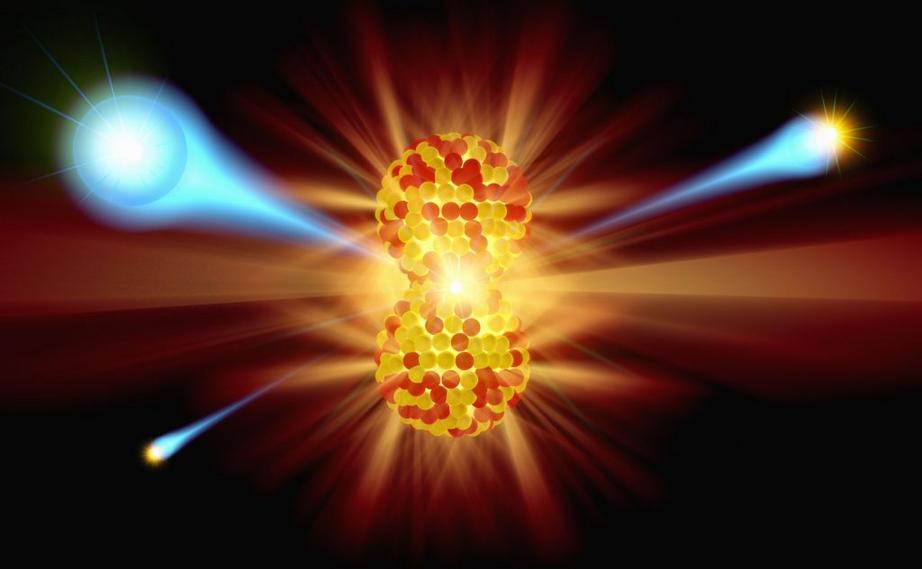Scientists created a chemical reaction which was impossible until now. The fusion of two atoms
Atoms of Sodium and Caesium combined in the lab to shock the world.
Chemical reactions are known for their ‘stochastic’ encounters between elements that too if they are a decent match. But what if scientists want an exotic pairing of elements? What if scientists want a molecule which can be obtained by the atoms of elements which wouldn’t normally form a molecule? The way of seeing and performing chemical reactions may change drastically from now on as researchers from the US have just performed the world’s most precisely controlled chemical reaction scaling a reaction down as small as it can go, sticking together just two atoms from elements that wouldn’t normally form a molecule. Chemical reactions normally proceed through the random collisions of particles and are usually hit-and-miss affairs, where vast numbers of atoms are thrown together under the right conditions, and probability does the rest.
Laboratories in the past have created molecules by combining clusters of atoms, and the reactions were then measured in terms of averages. The goal was to gain additional insights on how molecules interact and to enable controls for reaction chemistry and design new quantum materials. A team of Harvard University researchers under the leadership of Kang-Kueng Ni began with just one atom of Sodium and Caesium each. They used laser ‘tweezers’ to set them to the different frequencies depending on their polarizabilities to manipulate individual atoms of these two alkali metals into close proximity, and provided a photon to help them bond into a single molecule. It is known as a ‘Photo Association’ reaction.
An interesting alloy like molecule was produced by these atoms. The method of creation used could pave a way to a much better understanding of reactions and this could lead to the kind of materials we might need in the future. Researchers say the discovery holds great promise for the future of quantum computing as the dipolar molecule constitutes a new type of qubit, the smallest unit of quantum information, which could lead to more-efficient devices in the future. The lead researcher, Kang Kueng Ni, said,
“The direction of quantum information processing is one of the things we’re excited about.”
If these two atoms happen to be close enough with the right energy, a connection can be formed no matter how improbable it sounds but it doesn’t seem impossible.
The whole experiment was conducted in an ultra-high vacuum, with very low density. In order to achieve this perfect mix of energy and timing, the researchers held single atoms in overlapping magneto-optical traps and pelted them with photons to cool them down to a fraction of a degree above absolute zero. Meanwhile, they used a pair of lasers tuned to create an electrical effect, causing each atom to move towards each laser’s focus as if they were pulled into two sci-fi tractor beams. Ni says that the next step would be to create molecules by combining them while in a ground state, rather than an excited one with the goal of creating longer lived molecules.
“I think that a lot of scientists will follow, now that we have shown what is possible. This study was motivated by a few different things. In general, we are interested in a fundamental study to see how physical interaction and chemical reaction contribute to making phenomena complex. We wanted to take the simplest case, the laws of quantum mechanics, which are the underlying laws of nature. Our quantum pieces will then build up to something more complex; that was the initial motivation. Certainly, the work is not finished, but this is one breakthrough step.”
The ultimate goal would be the creation of quantum components for the next generation of computing and control of molecular interactions. For this kind of a chemical reaction, nothing can be left to a chance. Kang-Kueng Ni has added a hope by saying that if one dipolar molecule can be created in the lab, bigger and more complex ones can be made as well. Other scientists also jumped into the hype by showing their excitement over the results of the experiment. Jun Ye, a representative of the US National Institute of Standards and Technology, expressed his delight in the following words:
“The experimental demonstration represents for the first time that a chemical reaction process is deterministically controlled. Control of molecular interactions, including reaction, at the most fundamental level, has been a long-standing goal in physical science.”

